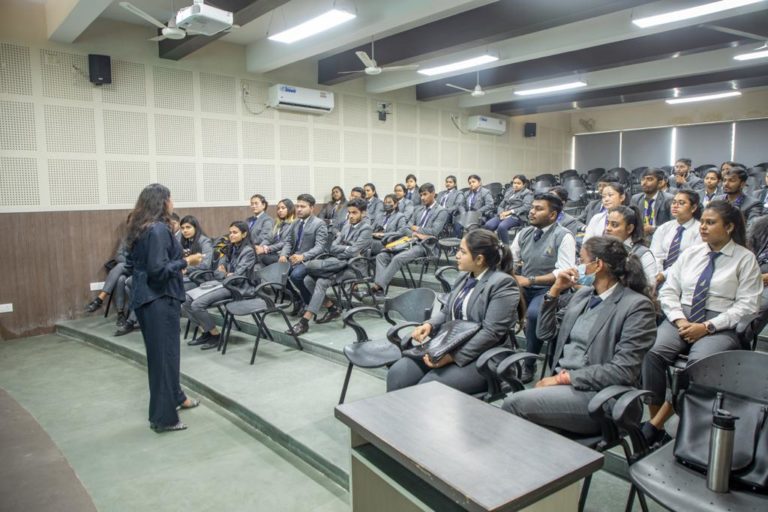The distance from patience to purpose has been dwindling drastically. Instant Gratification is the mantra of the New Generation’s approach to life. Smart e-devices have been the mainstay. There are innumerable teaching strategies for higher education available in the teaching-learning process to make it more effective. The core objective of such methodologies, models, and strategies is to make the teaching-learning environment conducive and learner friendly.
Ever-evolving demand & Challenges
As we know, educators and academicians often confront challenges to satiate the curiosity of their learners in keeping the momentum of blended methods of Andragogy (Adult Learning) and Heutagogy (Self-Directed Learning). Thanks to Alexander Kapp, the German Educator who introduced the term Andragogy in 1833. Though the formal shaping of the concept is indebted to Malcolm Shepherd Knowles, the Father of Adult Learning Theory, with the publication of his paper “The Adult Learner: A Neglected Species’, in 1968, the application of the concept began long before . His foresightedness and the need for augmenting such effective strategies – for mind mapping adult learners in the modern era of technological evolution such as Artificial Intelligence (AI) and Machine Learning (ML) is commendable.
Need for the transformation of traditional methods
As we know, of the four methods of traditional teaching, teacher-centred, learner-centred, content-centred, and interactive-participative methods, the last three are prominent in the modern era. The teacher-centred underwent a radical transformation by changing the traditional role of the teacher from a mere knowledge transmitter to a guide and mentor. The learner-centred, on the other hand, has acquired a significant place as the former had to facilitate his role as a facilitator to satiate the needs and requirements of the latter. The content-centred, on the other hand, seeks to have attractive, short, and crisp content, as the lion-share of the new-gen doesn’t prefer to be voracious readers. My colleagues also shared similar opinions from a few Colleges in Siliguri. The interactive-participative method has formed a new shape and diversified demands occasionally.

Learners’ preferences based on their nature and experience
As we know, the educator in an ideal classroom needs to consider the interests and preferences of his learners. While dealing with the unique personalities of learners, the educator needs to take into account three categories of learners-Visual Learners (prefer to have attractive images, graphs, charts, and pictures), Auditory Learners (prefer to have words, sounds, and musical effects), and Tactile learners (prefers the learning by doing).
New-age Teaching Strategies for Higher Education

Keep your vital Energy level up and lively
One of the prerequisites for making a classroom of youths alive and active is to transmit the positive energy of selflessness from the educator to the educand, as this energy reflects the real interests, genuine intentions, enthusiasm, and willingness to serve and transmit from generation to generation.
Make optimum use of available technology
Information and Communication Technology (ICT) has a prominent role in ease of communication with efficiency. However, no technology can replace or replicate the human bonding and emotional attachment of belongingness derived from the consistent bonding between the educator and the educand.
Maintain significance and relevance
The new generation of learners places a greater emphasis on the importance and relevance of the subjects or content being taught.
It is crucial to validate the content in accordance with their beliefs, experiences, and specific needs. When educators align the material with learners’ perspectives and take into account their individual requirements, it enhances engagement. This, in turn, leads to improved learning outcomes for these students.
Hold stable perception
In the realm of higher education, students gain their perspectives and understanding through active engagement and practical experiences. These hands-on encounters play a vital role in shaping their beliefs, opinions, and overall outlook on various subjects.
Consequently, attempting to change or modify their existing views without providing compelling, logical, and well-supported arguments becomes an arduous task. Students tend to hold onto their established perceptions because they are deeply rooted in their personal experiences. This makes it necessary to present valid and convincing points of view to initiate any meaningful shifts in their thinking.
Have objective-lead-readiness
The learners in higher education institutions exhibit a natural inquisitiveness that is directed towards the attainment of learning objectives. Their priority lies in understanding and clarifying these objectives, as they serve as guiding principles for their educational journey.
Once the objectives are effectively communicated and made transparent, the learners become highly receptive and eager to absorb the knowledge and information presented to them. The clarity and explicitness of the learning objectives play a pivotal role in capturing the interest and enthusiasm of the learners, stimulating their active involvement and participation in the learning process.
Keep the spark of motivation ignited
Learners in higher education are inherently self-motivated individuals. They possess a personal drive to succeed and excel in their academic endeavours. They are driven by their own aspirations, goals, and passions. However, it is the responsibility of educators to play a crucial role in supporting and nurturing this motivation.
For example, educators can incorporate real-world applications and examples into their teaching to demonstrate the relevance and practicality of the subject matter. By connecting theoretical concepts to practical scenarios, learners are more likely to see the value and importance of what they are learning. This approach can ignite their passion and encourage them to explore the subject in more depth.
Appreciate the ability to be active and creative in the learning process
identifying creative and curious minds within a classroom setting can be a challenging task. However, it is essential to recognize and cater to the needs of these individuals in order to foster their growth and engagement.
Firstly, having an appropriate structure for the content is crucial. A well-structured curriculum helps learners grasp the foundational concepts and build upon them, creating a solid framework for further exploration.
Providing relevant resources is also vital. These resources can include case studies, practical examples, relevant articles or books, and multimedia content that align with the subject matter. Learners actively participate and apply the knowledge gained by connecting the content to their personal and professional lives, which motivates them.
Keep the ideas of the delivered content related, connected, and narrated as story-like cohesiveness
In higher education, learners actively engage their minds to connect ideas and ensure they remember what they learn for a long time. They link concepts together, improve their understanding, and merge new information with what they already know. By adopting this intentional approach, learners actively build a strong foundation of knowledge that they can apply in future learning and real-life situations.
Keep the content in small chunks of information
It is a challenge to hold the learners’ interest for a long time if the information is overloaded. Similar views were expressed by my colleagues from a few BBA Colleges in Siliguri. Ideally, the content delivered in small chunks with appropriate pauses helps the learners’ attention remain for an hour or so without getting monotonous.
Keep the learners engaged and fully involved
Capturing and maintaining learners’ full attention until the end is a big challenge for educators. To overcome this, they need to use engaging teaching methods, create an interactive learning environment, and adapt their strategies to meet different learner needs.
Educators need to deliver interesting content, make use of multimedia resources, and include interactive activities that encourage active participation and deep understanding. By doing so, educators can make learning more interesting and ensure that learners stay engaged throughout teir educational journey.
Keep the teaching contents and materials rich enough and visually appealing
An image has the power to surpass the impact of a thousand words when it comes to optimization and capturing learners’ interest effectively.
Visual stimuli have the ability to engage learners for extended periods and aid in their comprehension of the subject matter. By incorporating visual elements into educational materials, educators can enhance the learning experience and promote better understanding among learners.
Encourage learners to give their genuine feedback and ask questions intermittently
Periodic feedback is not only the easiest but also one of the most effective ways to evaluate the teaching-learning process. By collecting feedback from students at regular intervals, educators gain valuable insights into the impact of their teaching methods, instructional materials, and overall classroom dynamics.
Educators use this feedback to identify areas of improvement, make necessary adjustments, and ensure that the learning experience is optimized for the students. Additionally, periodic feedback provides students with an opportunity to express their thoughts, concerns, and suggestions, fostering a collaborative and student-centred approach to education.
Let the learners experience flexibility and reflect on their passions
Educators play a crucial role in maximizing the potential of learners, and it is important for them to adopt a flexible approach that avoids coercion, hesitation, and fear. Instead of asserting authority, educators should strive to be like parent figures, emphasizing their responsibilities and demonstrating a nurturing attitude.
This approach creates an ideal solution that fosters a passion for learning and encourages greater interaction among students. By prioritizing guidance and support over strict authority, educators can establish a positive and conducive learning environment. An environment where students feel motivated and empowered to explore and excel.
Let the learners get involved and take part in small quizzes and discussions at the end
An ideal approach is to divide a one-hour class into three or four parts. This allows for conceptual clarity, skill enhancement, effective classroom communication, and the inclusion of a quiz. Ultimately bringing charm and enthusiasm through diversity.
The first part focuses on providing conceptual clarity to the students. The second part can be dedicated to skill enhancement. By incorporating these diverse components into the class structure, educators can create an engaging and dynamic learning experience.
Conclusion
It has become a challenge for teachers to grab the attention of learners in both physical and virtual classrooms. Using only one teaching method, such as andragogy, without allowing space for self-directed learning, can lead us in the wrong direction. It’s interesting to note that there is no one-size-fits-all. Teaching methodology or strategy when dealing with unique and dynamic young learners. Let’s be proactive and facilitators!







